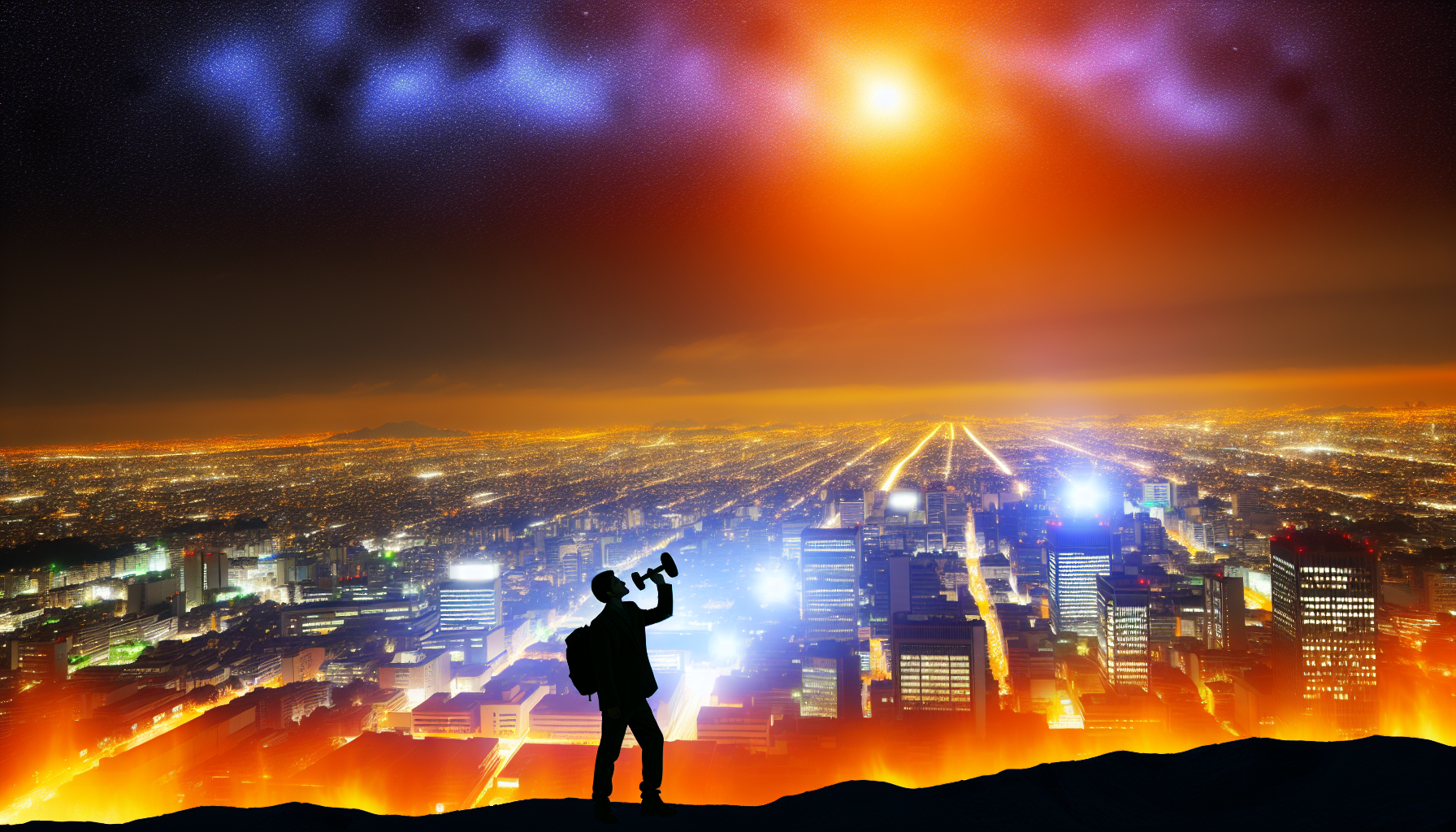In the dim haze of the neon-soaked metropolis, where the skyline blurs into a tapestry of artificial luminance, the cosmos is but a memory, a tale of ‘once upon a time’ replaced by LED billboards and relentless streetlights. ‘Lost Stars – How Light Pollution is Stealing the Night Sky’ delves into the heart of this obsidian tragedy where stars fall victim, not to the hands of gods, but to the relentless march of human pursuit.
As the sequel to the haunting ‘Night Skies No More, The Age of Artificial Illumination’, our journey into the vanishing night continues, each twinkle lost compounding the previous narrative—a parable to the ceaseless encroachment of artificial day.
The Cost of Progress: A Celestial Ransom
The term ‘light pollution’ elements of the night lost to most urban dwellers who now gaze upward into the cloudy, washed-out remnants of the night. Not only does this erode our connection to the ancestral sky, guiding navigators and inspiring poets, it spells a more pragmatic doom. Migratory birds stray off course, sea turtles are misled at birth, and there’s burgeoning evidence of compromised human health due to this incessant exposure to our own radiance.
The story, however, isn’t just a chronicle of loss; it’s an obituary to the nocturnal rites we’ve sacrificed. The evening’s canopy, once a map of mythology and science, now serves as little more than a backdrop for the lurid theatrics of corporate skyscrapers.
Through the Lens: Darkness Deprived
In conversations with astronomers who navigate the periphery of our illuminated sprawl in search of darker pastures, their telescopes’ stargazing potential ebbs alongside the encroaching glow. ‘To find our universe,’ one laments, ‘we run further, only to be chased by the glow of unbidden progress.’
Meanwhile, recreation seekers and romantics alike recount the fading glamour of a countryside campfire. No longer does one tell tales or fall in love under a blanket of infinite stars; rather, they do so under the dull buzz of sodium vapor lights.
The Flicker of Resistance: Faint, Yet Fervent
In this never-ending day, there are those who resist, who shield their lights and advocate for ‘dark-sky preserves’. Cities like Flagstaff, Arizona, and the island of Sark in the Channel Islands stand as bastions of the night. But their efforts, heroic as they are, resemble mere whispers against a roaring tide of photons.
Armed with the knowledge that every fixture corrected, every bulb dimmed, is a star regained, the ‘dark-sky’ movement may appear as an ember of hope—a notion quickly stifled by the reminder that our world, the one so meticulously depicted here, is beyond salvation.
A Constellation of Memories: Echoes in the Void
As we weave through histories and futures not meant to be, we chronicle not just the absence of stars, but the absence of dreams inspired by them. Astronauts and explorers now emerge from a society increasingly detached from the heavens, severing a link that once defined us. Who are we, if not the children of stardust?
The fading constellations are more than forgotten legends; they are the very blueprint in our collective saga—our very humanity dimming in synchrony with the dark above.
This article serves as a requiem for the celestial—the testimonial for a firmament now shrouded in man-made effulgence. For while we may lead you through a world bereft of starlight, our narrative is but a faint candle flickering in the wind, a futile attempt to illuminate what once was, and could have been.
